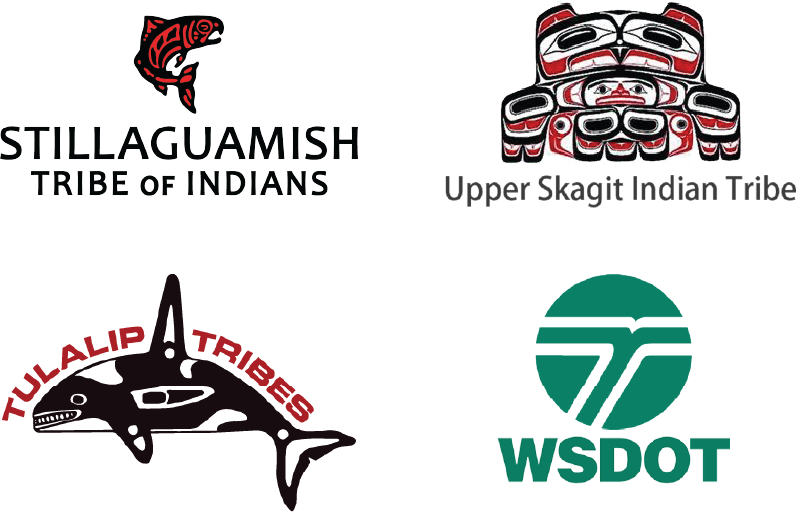Red Cabin Creek Wildlife Overpass Project
Updated 4/11/2025
Project Overview
Roadkill is a serious problem for both drivers and wildlife. Crossing elk and other large mammals can create life-threatening hazards on roadways. In Washington State alone, there are more than 1,665 automobile accidents per year involving wildlife, which is approximately 3.2% of all collisions reported annually with a societal cost of $79,308,460/year (wildlifeconnectivity.org).
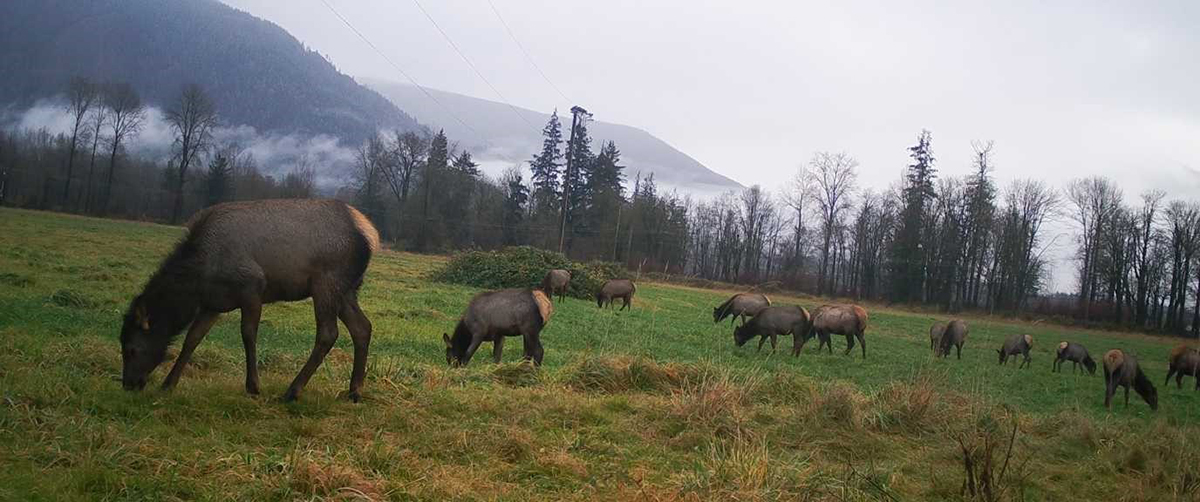
Elk foraging near SR 20 at the Red Cabin Creek project site
Wildlife-vehicle collisions and wildlife-vehicle conflict inflict far more damage within the natural world than what is recorded with vehicle crashes. Many animals that are hit on roadways die later and are never reported. These numbers also do not account for wildlife-vehicle collisions on roads that are not administered by the state department of transportation. This means mitigation planning is not only for public safety, but also for the survival of all types of species.
The Stillaguamish Tribe is partnering with the Upper Skagit Indian Tribe, Tulalip Tribes, and the Washington Department of Transportation (WSDOT) to design and construct a wildlife overpass east of Red Cabin Creek (milepost 76) on State Route 20 (SR 20) in Skagit County, Washington. Funding for this project is from the Federal Department of Transportation’s Wildlife Crossings Pilot Program Grant FY 2022-2023 (highways.dot.gov), which was created as part of the 2021 Bipartisan Infrastructure & Jobs Act. These funds were earmarked for the specific purpose of creating wildlife crossing structures in the United States.
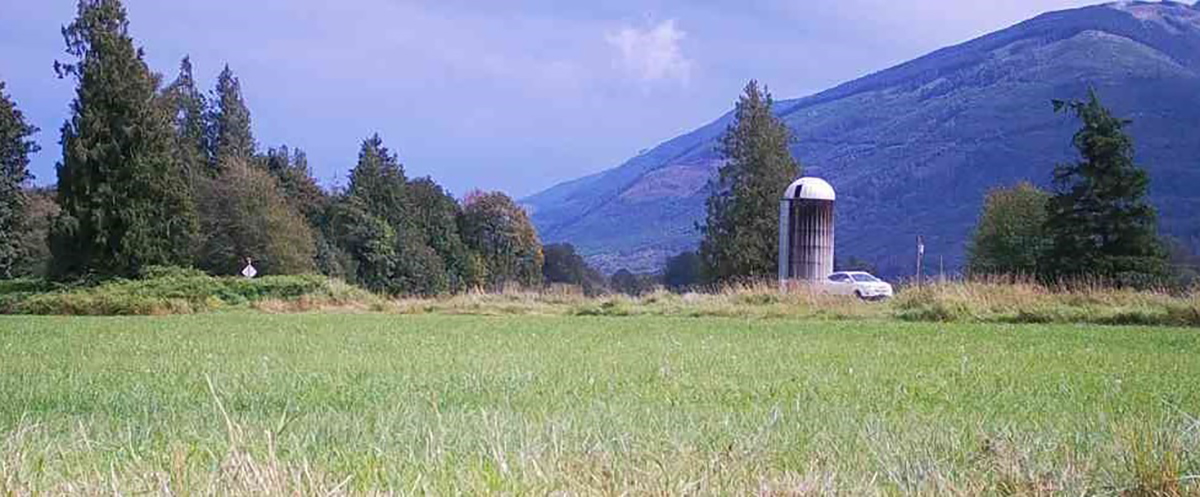
Red Cabin Creek project site along SR 20
The purpose of this project is to improve highway safety and reduce wildlife-vehicle collisions along SR 20. Elk is the target species with 74 elk-vehicle collisions reported near the project site between 2012 and 2023. The WSDOT will own and maintain the structure once construction is complete. The Stillaguamish Tribe and partners will conduct pre- and post-monitoring activity on and around the structure location.
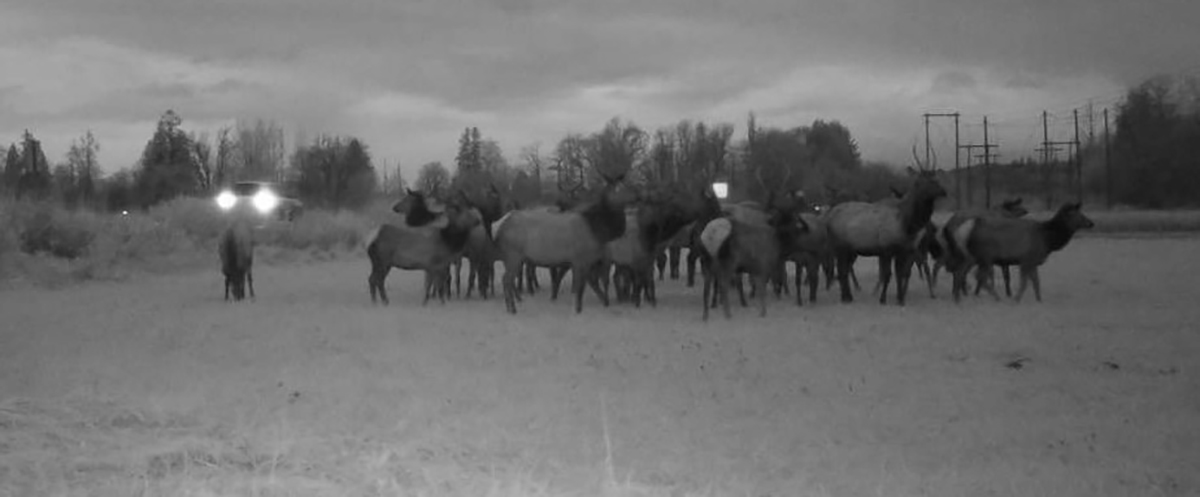
Herd of elk after crossing SR 20 at Red Cabin Creek
According to WSDOT, SR 20 between Sedro-Woolley and Concrete ranks in the top 10% of the worst elk-vehicle collision areas in Washington State and is designated as 1 of the 15 statewide Habitat Connectivity Priority Zones. The proposed crossing structure location is in a well-documented elk-vehicle collision hotspot and has documented collisions with other species such as black-tailed deer, black bear, and coyote. Elk and other wildlife species will continue to reside in and around the Skagit River Valley and crossing SR 20 is necessary for habitat access, migration, and dispersal. Providing an overpass structure will enable wildlife to safely cross the road and reduce the risk of collisions with vehicles.
Elk-Vehicle Collisions
The Skagit River Valley is within the core area of the North Cascades elk herd and SR 20 bisects the herd’s range. The Red Cabin Creek Wildlife Overpass project aims to reduce the number of elk-vehicle collisions by targeting a well-documented collision hotspot near milepost 76, east of Red Cabin Creek.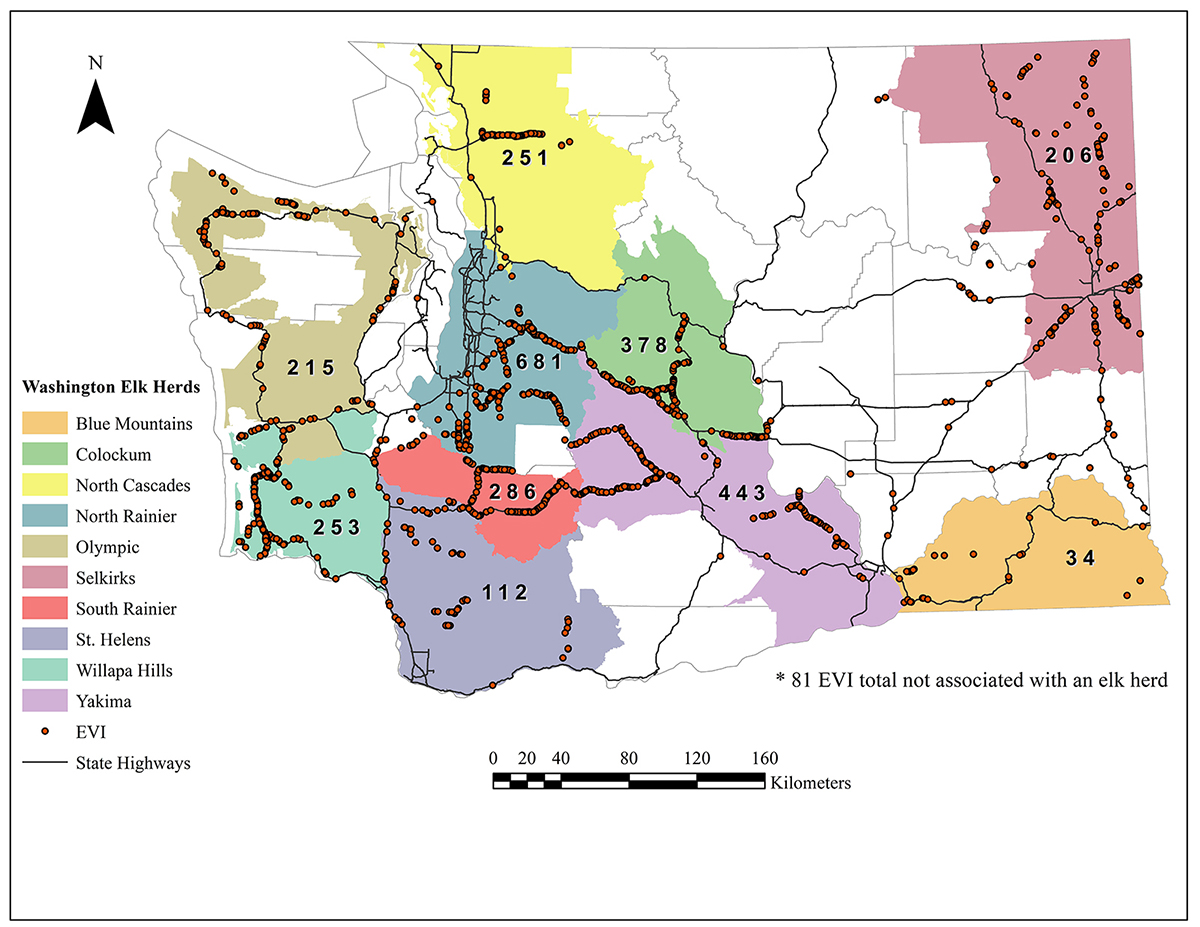
Elk-vehicle collisions within the North Cascades elk herd range. Majority occur within a
20-mile stretch on SR 20 between Sedro-Woolley and Concrete.
In 2020, the Stillaguamish Tribe and WSDOT analyzed elk GPS collar data, elk-vehicle incidents (collision data, carcass removal data, and salvage permit data) and found that Red Cabin Creek was identified as a primary hotspot on SR 20.
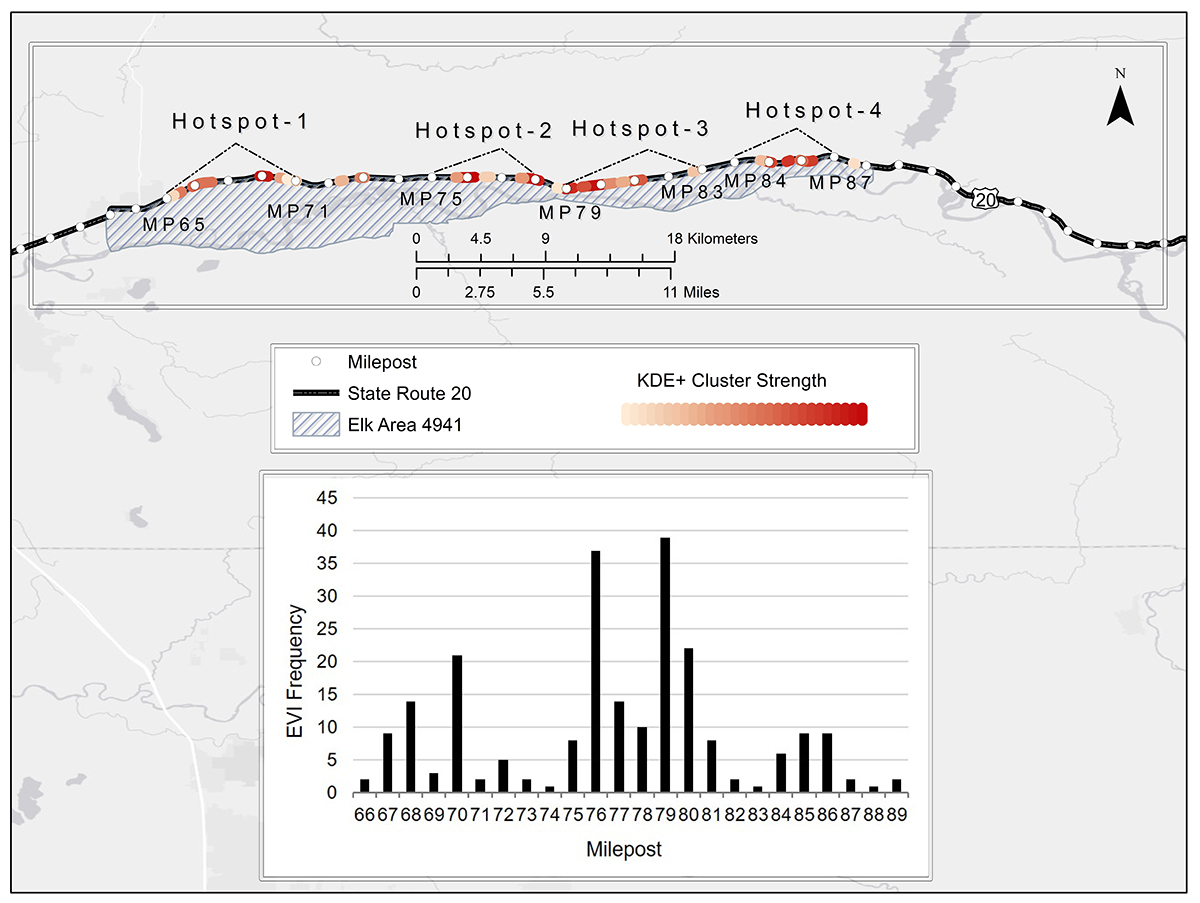
Red Cabin Creek is located in hotspot 2 near milepost 76
Societal costs associated with an elk-vehicle collision is estimated to be $45,445 per incident. These estimates incorporated vehicle repair costs, human injuries, and human fatalities, but do not include the impact to wildlife from injuries and mortalities. Between 2012 and 2023, there were 74 elk-vehicle collisions (including carcass reports and salvage permits) reported near Red Cabin Creek. This total does not include elk that were hit and died off the highway.What to Expect
A vegetated wildlife overpass designed and built to blend into the surrounding landscape. Fencing and supporting structures (wildlife exclusion fencing, jump-outs, and wildlife guards) present in the right-of-way between Red Cabin Creek and Davis Slough. Construction will require minimal road closures and traffic detours. Road work will most likely occur overnight during the weekend.

Example of a vegetated wildlife overpass (Montana Department of Transportation)
An opportunity for the public to learn more and provide input at the Sedro-Woolley Community Center in September 2025 (date and time TBD). This webpage will be updated regularly with project progress details and as new information becomes available.General Project Timeline
2025
Component I: Permitting, Environmental Documentations, Preliminary Design
- 15% design - May 2025
- 30% design - September 2025
- Public Meeting - September 2025 (Sedro-Woolley Community Center – Date/Time TBD – please check back)
- Pre-construction monitoring (cameras, GPS collars, wildlife-vehicle collision data): On-going
2026
Component I: Continuation
- Completed environmental documentations & permits
- Right-of-Way certification
- Utility certification
- Final design
- Final approval from WSDOT for construction
- Ad-ready contract documents for RFP development
- Pre-construction monitoring (cameras, GPS collars, wildlife-vehicle collision data)
2027 – 2028
- Request for proposals for Construction Bids (please check back for specfics)
- Contractor selection
- Construction
- Pre- and post-construction monitoring (cameras, GPS collars, wildlife-vehicle collision data)
2028 – 2032
- Post-construction monitoring (cameras, GPS collars, wildlife-vehicle collision data)
Additional Info
WSDOT Habitat Connectivity Priority Zone:
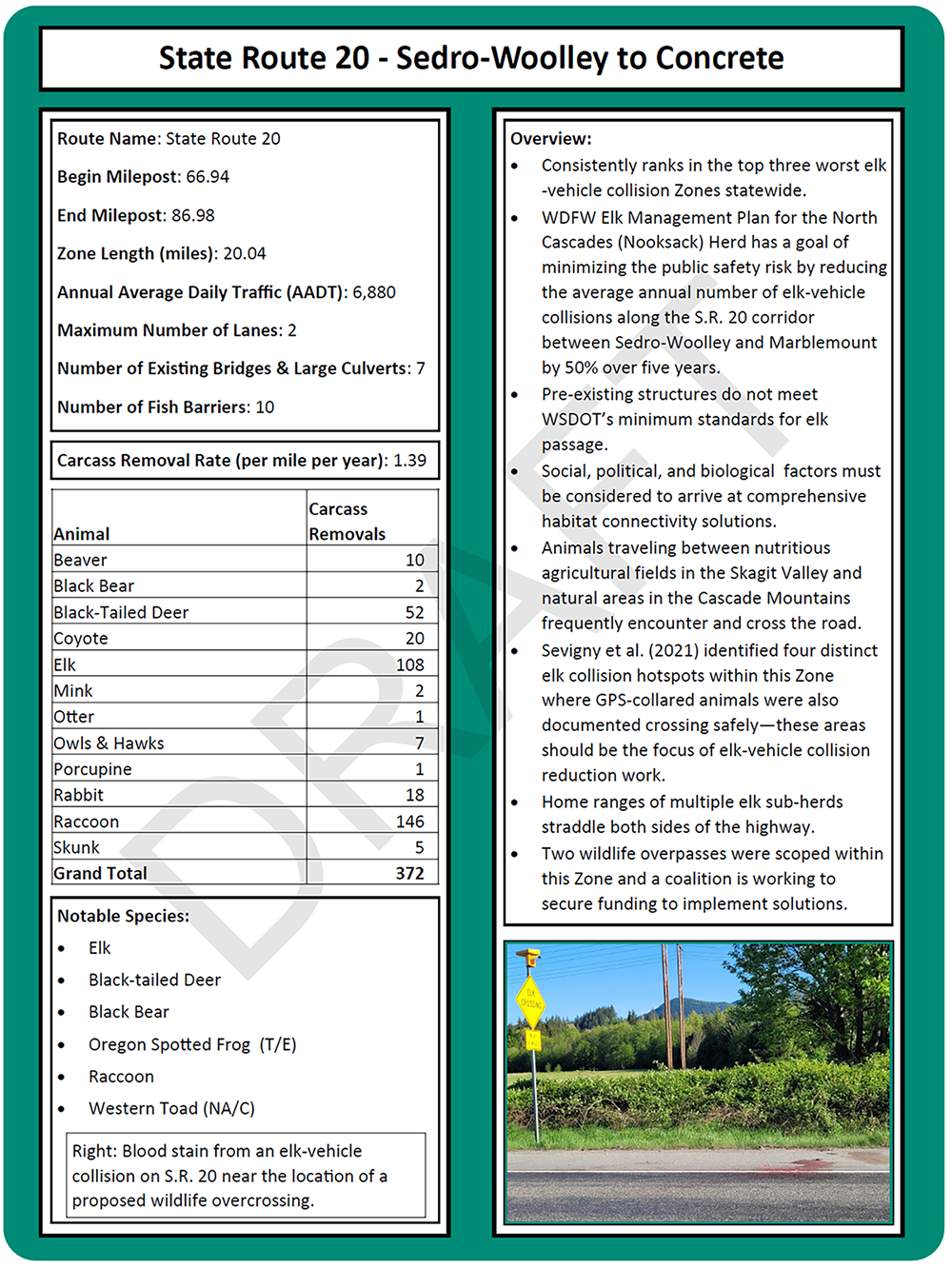
Press Links:
May 1, 2024
High Country News: Tribes lead on wildlife passages
February 28, 2024
Conservation Corridor: Funding awarded under the Wildlife Crossings Pilot Program
February 21, 2024
Northwest Treaty Tribes: As elk co-managers, tribes plan highway overpass project
February 12, 2024
Columbia Insight: Washington Tribe gets $8.5 million for wildlife overpass
December 23, 2023
Go Skagit: Wildlife crossing planned for Highway 20
December 5, 2023
Northwest Sportsman: 2 Westside Wildlife Crossing Projects Receive Federal Funding
Project Contact Info:
Jennifer Sevigny | Wildlife Program Manager
jsevigny@stillaguamish.com
Amanda Summers | Wildlife Biologist
asummers@stillaguamish.com
Project Partners:
